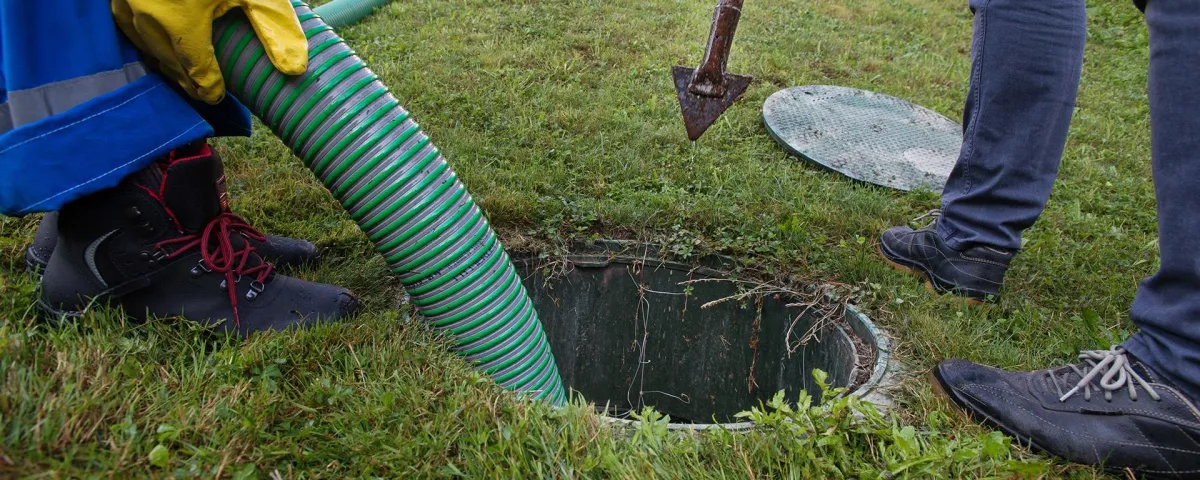
Understanding What Eats Sludge in Septic Tank: A Complete Guide to Natural Solutions

Are you concerned about the mysterious world beneath your yard? The health of your septic system depends greatly on understanding what eats sludge in septic tank environments.
We'll guide you through everything you need to know about managing septic tank sludge effectively, from natural solutions to maintenance tips that will save you thousands in repairs.
Why Septic Tank Sludge Matters
Your septic system plays a crucial role in your home's waste management. According to the Environmental Protection Agency, more than 20% of American homes rely on septic systems. When these systems develop excess sludge, they can face serious problems that affect both your home's functionality and your family's health.Think of your septic tank like a living ecosystem.
Just as a garden needs the right balance of nutrients and care, your septic system requires specific conditions to function properly. The key players in this ecosystem are the beneficial organisms that naturally break down waste.
Understanding Septic Tank Sludge
Before we explore how to dissolve sludge in septic tank systems, let's understand what creates this challenge. Septic tank sludge consists of solid materials that sink to the bottom of your tank. The Centers for Disease Control and Prevention explains that this includes:
Organic waste materials from household activities
Inorganic matter that cannot be broken down
Settled solids from daily water usage
Bacterial biomass that accumulates over time
The process of sludge accumulation is natural, but without proper management, it can lead to system failure. Imagine it like the bottom of a pond - over time, organic matter settles and builds up. In nature, various organisms help break this down, and your septic tank works on the same principle.
Natural Solutions to Remove Sludge from Septic Tank
Nature has provided efficient solutions to reduce sludge in septic tank environments. Here's what naturally eats sludge:
Beneficial Bacteria
These microscopic helpers break down organic matter in different ways:
Aerobic bacteria need oxygen to function and are incredibly efficient
Anaerobic bacteria work without oxygen, breaking down waste slowly but steadily
Facultative bacteria adapt to either condition, providing flexible waste processing
The National Sanitation Foundation indicates that these bacteria can reduce sludge volume by up to 40% when properly maintained.
Enzymes
Natural enzymes work like specialized tools, each with a specific job:
Protease enzymes break down proteins
Lipase enzymes digest fats and oils
Amylase enzymes convert starches
Cellulase enzymes decompose paper products
How to Reduce Sludge in Septic Tank Systems
Follow these steps to maintain healthy sludge levels:
Regular Maintenance:
Schedule professional inspections yearly
Monitor water usage carefully
Keep detailed maintenance records
Check for unusual odors or drainage issues
Add Beneficial Organisms:
Use EPA-approved bacterial additives monthly
Maintain proper pH levels between 6.8 and 7.6
Ensure adequate temperature above 50°F (10°C)
Avoid harsh chemicals that kill beneficial bacteria
Prevent System Overload:
Spread laundry throughout the week
Fix leaking fixtures promptly
Install water-efficient appliances
Divert rainwater away from the drain field
Natural Additives That Help
Research from the Environmental Protection Agency supports using these natural additives:
Active dry yeast helps activate existing bacteria
Specialized bacterial formulations boost breakdown activity
Natural enzyme products target specific waste types
Biological boosters enhance natural decomposition
Prevention Is Better Than Cure
To prevent excessive sludge buildup:
Water Conservation:
Install low-flow fixtures
Fix leaks immediately
Use water-efficient appliances
Space out water usage throughout the day
Proper Disposal:
Never flush non-biodegradable items
Avoid garbage disposal units
Use septic-safe toilet paper
Dispose of grease and oils separately
Regular Monitoring:
Check for slow drains
Listen for unusual sounds
Monitor lawn conditions
Schedule regular inspections
Professional Treatment Options
When natural methods need support, professional options to dissolve sludge in septic tank systems include:
Hydro-jetting to break up compacted sludge
Aeration systems to increase bacterial activity
Specialized bacterial treatments
Professional pumping services
The Science Behind Sludge Reduction
Understanding how to reduce sludge in septic tank environments involves some basic science. The process relies on:
Biological Activity:
Bacteria consume organic waste
Enzymes break down complex molecules
Natural decomposition occurs continuously
Temperature affects breakdown rates
Chemical Balance:
pH levels influence bacterial activity
Oxygen levels affect decomposition
Mineral content impacts effectiveness
Chemical interactions affect breakdown
Conclusion
Understanding what eats sludge in septic tank systems is crucial for maintaining a healthy and efficient waste management system. By working with nature's own processes and maintaining proper care, you can avoid costly repairs and protect your home's septic system for years to come. Remember that the key to success lies in regular maintenance, proper care, and supporting the natural biological processes that keep your system running smoothly.
Remember that if you're ever unsure about your septic system's health, consulting with a licensed professional is always the safest choice. They can provide specific guidance for your system's needs and help ensure its long-term success.
Small Call to Action Headline

© 2025 | All Rights Reserved | Privacy Policy